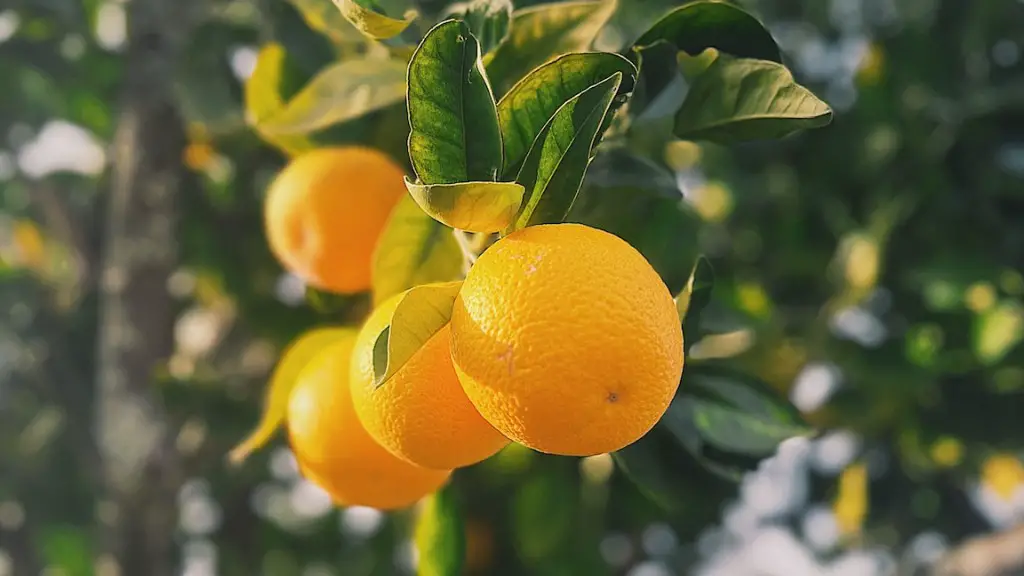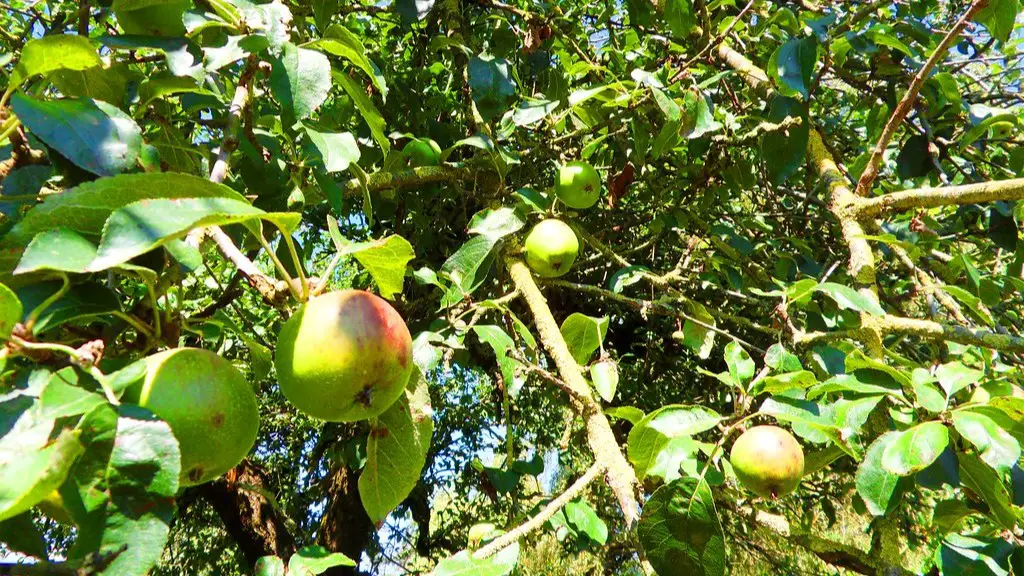The phenomenon of lemon tree leaves curling is a common symptom that many gardeners of the citrus tree species experience. It can be caused by a variety of disorders, ranging from environmental stressors to fungal and viral infections. A proper diagnosis of the causes is important, as then the appropriate solution can be adopted. In this article, we discuss the possible reasons for why lemon tree leaves are curling and how to remedy the situation.
Temperature Issues
High temperature exposure is one of the most common causes of lemon tree leaves curling. When temperatures increase above 70 degrees Fahrenheit, an environment is created that’s conducive to the recurvature of lemon tree leaves and the eventual loss of chlorophyll, leading to scorching and wilting. This is referred to as ‘sunscald or sunburn.’ Additionally, exposure to low temperatures in winter can also cause the leaves of lemon trees to curl. When temperatures drop below 45 degrees Fahrenheit, lemon trees go into a defensive mode and retract their leaves in an effort to conserve water.
Water and Humidity Splits
Imbalanced soil moisture in a citrus tree’s environment can have a dramatic effect on the health of its leaves. Too little water results in gardeners observing a curling phenomena, owing to the fact that dry soils dehydrate the leaves and cause them to join in at the edges and tips. Alternatively, too much water can cause the lemon tree leaves to curl. In this case, they often turn yellow before shrinking due to the cause of fungal infection. Additionally, high humidity levels produce the ideal environment for fungal and bacterial infections on leaves, leading to the characteristic curling.
Nutrient Deficiencies
Chlorosis is a common condition in which lemon tree leaves curl due to a deficiency of essential nutrients such as nitrogen, magnesium and iron. In this case, a yellowish tone of the leaves is often observed, caused by the lack of chlorophyll production due to these deficiencies. In such cases, compost or a nitrogen-based fertilizer can be applied to rectify the situation and restore the health of the tree.
Insects
Insects such as aphids, mealybugs, scale and spider mites are capable of inducing the curling of a citrus tree’s leaves. This is due to their removal of sap, causing reduced photosynthesis which can manifest in curled leaves. Heavy infestations of these pests also vectors other infectious agents, such as bacteria and fungi, to the tree. Adopting efficient and environmentally sustainable pest control methods should help eliminate the issue.
Fungal and Viral Diseases
Fungal and viral infections of citrus trees can cause an array of symptoms, with curling being one of them. Fungal infections are typically caused by wet weather and persist well into the warmer summer months, and are often characterized by yellow edges and the presence of spots. Viral diseases often present as yellow speckles, mosaic patterns, and bumps on the leaves, and cause them to curl at their tips.
Preventive Measures
Proper care and husbandry of lemon tree leaves can help guard against the initial onset of curling. It is important to maintain proper irrigation and fertilization schedules, as well as to monitor temperature swings and humidity levels. Utilizing appropriate pest control measures should also help mitigate the risk of infection.
Pruning Tips
If lemon tree leaves are already curled, then the most effective method of managing the disorder is pruning of affected organs. The affected parts should be completely pruned off in order to avoid any spread of disease and to aid in the recovery of the tree. If a high level of pruning is adopted, then additional fertilizer and water should be provided to promote the establishment of new growth.
Proper Soil Preparation
Soil preparations, in the form of tilling and incorporation of nutrients, prior to planting lemon trees can also help promote healthy growth and prevent the curling of leaves. A sufficient amount of compost should be incorporated into the soil, as well as nitrogen-based fertilizers, in order to provide the tree with all the essential elements. Additionally, the soil should be tested frequently in order to be sure of the availability of essential minerals.
Humidity Management
High humidity levels should be avoided during warm conditions as they can contribute to fungal infections. Soil should be kept as dry as possible and shelter should be provided for trees on warm days. Pruning of dense foliage should also be adopted in order to improve air circulation.
Irrigation Scheduling
Adopting a regular schedule for watering citrus trees is essential. In general, the soil should be allowed to become dry between waterings, in order to minimize areas of high humidity. Furthermore, water should be applied in the early morning in order to prevent the spread of fungal infections, as fungus prefers to spread in cool, humid conditions.
Fertilization Practices
Fertilizing citrus trees with nitrogen in the form of organic compost can help promote regular growth and correct any issue associated with nutrient deficiencies. Additionally, a mulching strategy should be adopted in order to continuously supply nutrient and organic matter to the trees roots. Removal of dead leaves, stems and root systems should also be adopted in order to prevent fungal infections.



